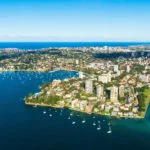 In a bid to realise their dream of home ownership, Australians are not shy of borrowing more. In an article for the website realestate.com.au, Venessa Paech reports that the national average home loan size has increased by 6.4% over the last couple of years. On an average, people are borrowing $319,200 for fulfilling their ownership ambition.
In a bid to realise their dream of home ownership, Australians are not shy of borrowing more. In an article for the website realestate.com.au, Venessa Paech reports that the national average home loan size has increased by 6.4% over the last couple of years. On an average, people are borrowing $319,200 for fulfilling their ownership ambition.
NSW on top
New South Wales is leading the cavalry charge with a hike of 10%. On an average, people are willing to borrow as much as $358,800 here. The Northern Territory and the Australian Capital Territory are also sailing comfortably above the national average.
Cash rates to keep steady
Cash rate is not going anywhere, feel experts and this implies a home shopping bonanza for the prospective buyers. Paech talks about saving as much as $39,600 over the 30-year tenure of a home loan in NSW. This is some money! HSBC has given us a cue already; what with its plan to decrease its variable rates.
Lenders are busy taking the carpet from beneath their rival’s feet and this gives enough opportunities to buyers to fetch a super deal.
You can read the original article here.
High-end investors skewing data
In my opinion, the 6.4% spike in national home loan size may have to do with investor frenzy. We are seeing first home buyers relegated to a tight spot of late and investors buying in a wholesome manner at really high stickers are skewing the data. I think it will serve us better to keep looking at the median and not the average in order to cut down an inflated reading of the figures.
HSBC reduces variable rate, really!
HSBC looking to bring down its variable rate flummoxes the general audience. After all, what makes them ready for the move if not some kind of knowledge that the fixed rates won’t be shooting up any time soon. This can only be so if the cash rates remain steady for a conceivable timeframe.
The time is possibly ripest for getting a loan serviced. If you miss the bus, not only will you be likely to borrow at a higher interest rate (stiffer repayment terms) but you may even end up buying properties at an inflated price. Isn’t further capital growth expected in Sydney in 2014, especially when a 17% drop in available listings is also indicating undersupply and a subsequent price escalation?
What do you predict for the first home buyer segment in 2014?











